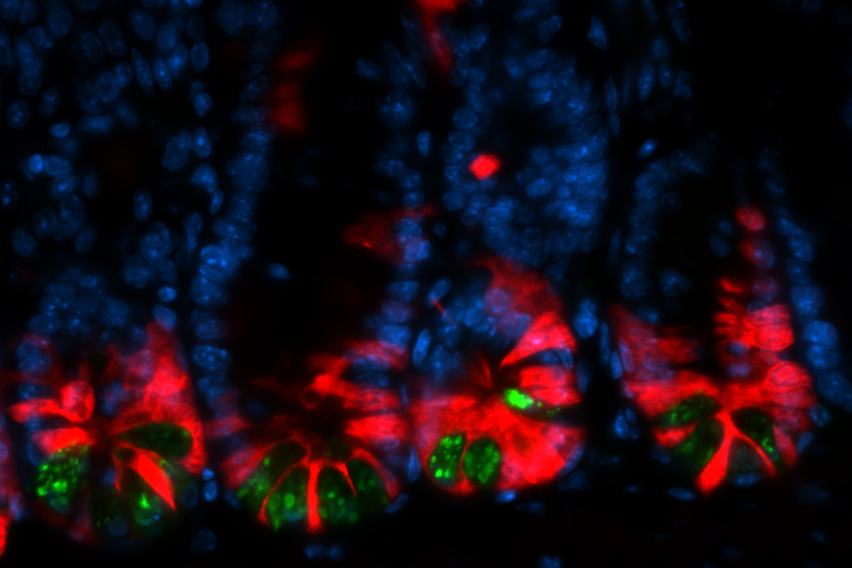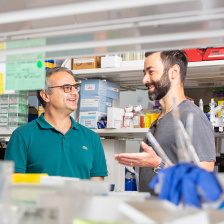
Stem cells (red) in intestinal crypts. Credit: Shinya Imada, Renan Oliveira Corrêa, Chia-Wei Cheng, Ömer Yilmaz. (2021 Image Award Winner)
Cell Stem Cell
August 4, 2022
The Yilmaz Lab is shedding light on on how intestinal stem cells (ISCs) self-renew and give rise to specialized cells of the intestinal epithelium. Sitting at the bottom of sac-like structures, known as crypts, that line the intestinal epithelium, ISCs depend on their neighboring cells to supply factors that maintain their stem state.
In a study published in Cell Stem Cell, a team of researchers led by KI postdoc Nori Goto directly visualized factor-producing cells in mouse models and conducted loss-of-function studies, finding that two types of cells, lymphatic endothelial cells and and a specific kind of fibroblast (RSPO3+GREM1+), supply an important niche factor, RSPO3. Furthermore, they found that RSPO3 is implicated in homeostasis and in regenerating ISCs after injury. In future work, the researchers plan to explore lymphatic and RG fibroblasts coordinate responses to diet, aging, and disease states, including cancer initiation and progression.
This study was supported in part by the MIT Stem Cell Initiative, the Koch Institute Frontier Research Program through the Kathy and Curt Marble Cancer Research Fund, and the Bridge Project.

